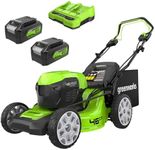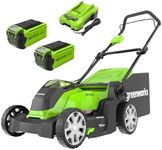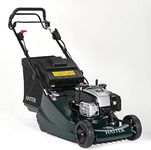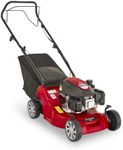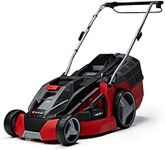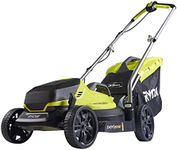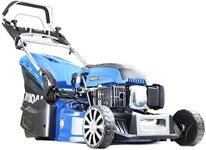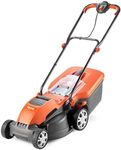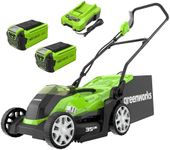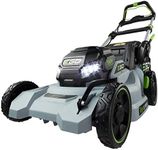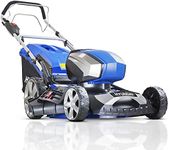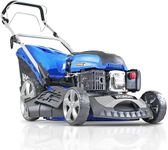Buying Guide for the Best Self Propelled Lawn Mowers
Choosing the right self-propelled lawn mower can make your lawn care routine much easier and more efficient. These mowers are designed to move forward on their own, reducing the amount of effort required to push them. When selecting a self-propelled lawn mower, it's important to consider several key specifications to ensure you get the best fit for your needs. Understanding these specs will help you make an informed decision and find a mower that suits your lawn size, terrain, and personal preferences.Engine PowerEngine power is measured in horsepower (HP) or cubic centimeters (cc) and determines how efficiently the mower can cut through grass. Higher engine power means the mower can handle thicker and taller grass with ease. For small to medium-sized lawns with regular grass, a lower engine power (around 140-160cc) is sufficient. For larger lawns or areas with dense, tough grass, you might need a mower with higher engine power (above 190cc). Consider the size and condition of your lawn when choosing the right engine power.
Drive TypeSelf-propelled lawn mowers come with different drive types: front-wheel drive (FWD), rear-wheel drive (RWD), and all-wheel drive (AWD). FWD mowers are easier to maneuver and are ideal for flat lawns. RWD mowers provide better traction and are suitable for hilly or uneven terrain. AWD mowers offer the best traction and are perfect for very challenging landscapes. Choose the drive type based on the terrain of your lawn to ensure smooth operation.
Cutting WidthThe cutting width refers to the width of the mower's blade and determines how much grass is cut in a single pass. Common cutting widths range from 20 to 30 inches. A wider cutting width (25-30 inches) allows you to cover more ground quickly, making it ideal for larger lawns. A narrower cutting width (20-24 inches) is better for smaller lawns or areas with tight spaces and obstacles. Consider the size of your lawn and how much time you want to spend mowing when selecting the cutting width.
Adjustable Cutting HeightAdjustable cutting height allows you to change the height at which the grass is cut. This feature is important for maintaining the health of your lawn, as different grass types require different cutting heights. Most mowers offer a range of cutting heights, typically from 1 to 4 inches. If you have a variety of grass types or want to change the cutting height based on the season, look for a mower with multiple height settings. Choose a mower with adjustable cutting height to customize your lawn care routine.
Mulching CapabilityMulching capability refers to the mower's ability to finely chop grass clippings and return them to the lawn as natural fertilizer. This feature helps improve soil health and reduces the need for bagging clippings. Some mowers come with dedicated mulching blades or attachments. If you prefer a low-maintenance lawn care routine and want to enhance your lawn's health, consider a mower with mulching capability. Evaluate your lawn care preferences to decide if this feature is important for you.
Ease of UseEase of use encompasses features like ergonomic handles, easy-start mechanisms, and lightweight design. These features make the mower more comfortable to operate and reduce fatigue. Look for mowers with adjustable handles, simple start systems, and manageable weight. If you have physical limitations or want a more comfortable mowing experience, prioritize ease of use features. Consider your personal comfort and physical ability when choosing a mower.
Maintenance RequirementsMaintenance requirements include how often the mower needs servicing, ease of cleaning, and availability of replacement parts. Some mowers have features like washable decks and easy-access oil ports that simplify maintenance. Regular maintenance ensures the mower's longevity and optimal performance. If you prefer a low-maintenance option, look for mowers with user-friendly maintenance features. Assess your willingness to perform regular upkeep when selecting a mower.
